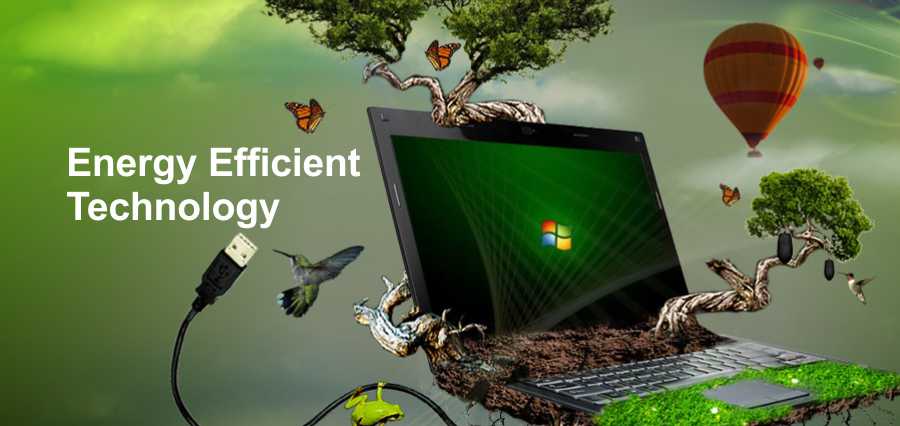The rapid expansion in data centers, due to the exponential growth of the cloud computing has caused the dramatic increase in energy consumption and its effect on the environment in terms of the carbon footprints. To reduce the power consumption, it is required to develop some energy efficient solutions. The Green Computing is the practice of executing policies and the procedures to improve efficiency of the computing resources in such a way as to reduce the energy consumption and environmental impact of their utilization. Green Cloud Architecture is rising from these trends leading, not only to energy efficiency, but also a carbon emission aware concept. In order to reduce energy consumption, a greener environment needs to be built.
Among all industries, the information communication technology (ICT) industry is arguably responsible for a larger portion of the worldwide growth in energy consumption. The goal of green cloud computing is to promote the recyclability or biodegradability of defunct products and factory waste by reducing the use of hazardous materials and maximizing the energy efficiency during the product’s lifetime.
Energy to be saved
The objective is to reduce power consumption of the data center. It offers the features like online monitoring, live virtual machine migration, and optimization of Virtual Machine Placement. Through this proposed Green Cloud Architecture, energy up to 27% can be saved. The need to manage multiple applications in a data center creates the challenge of on-demand resource provisioning and allocation in response to time-varying workloads. Data center resources are statically possessed to applications, based on the peak load characteristics, in order to provide performance guarantees and to maintain the isolation.
Energy-efficient resource management has been first introduced in the context of battery fed mobile devices, where energy consumption has to be reduced in order to improve the battery lifetime. Techniques which are developed for mobile devices also can be applied or adapted for servers and data centers; this kind of systems requires specific methods.
The primary method is to consolidate the Dynamic Voltage Frequency Scaling technique in an efficient way to maximize the resource utilization and to minimize energy consumption of the datacenters which will result in the reduced carbon footprints and thus will help more in achieving the Green Computing.
The Green Benefits
Cloud computing is the way to save money and energy for the business. Users emphasize Infrastructure as a Service (IaaS) and can improve their manageability and facilitate the maintenance of the resources. It means that benefit of business enterprises implicates to avoid spending on software and infrastructure resources, and allow business clients to focus on earning money rather than being weighted down with infrastructure concerns. Therefore, operating this model allows reducing the consummation of the power energy without spending money on running the servers. Moreover, with no servers to repair, the absence of hardware to upgrade and no software to install, labor costs are also reduced.
With SaaS software accesses usually through a browser-based client, i.e., it can run on virtually any authorized computer, making desktop and laptop resources easily replaceable. Thus, when the user also saves on the support, it doubles the impact and in fact increases green role in business. The employees can work remotely, traveling and moving from one place to another because they have fast access to the internet and the ability to use all the services at hand, on the other hand, it reduces the consumption of fossil fuels and the harmful pollution that results from vehicle emissions as well.
The reduction of energy and power consumption has become a first-order objective in the design of modern computing systems. The roots of energy-efficient computing, practices can be traced back to 1992, when the U.S. environmental protection agency had launched Energy Star, a voluntary labeling program which was designed to identify and promote the energy-efficient products in order to reduce the greenhouse gas emissions. Computers and monitors were the first labeled products. This has led to the widespread adoption of the sleep mode in electronic devices. The term “green computing” was introduced to refer to the energy-efficient personal computers.
Interesting Research Findings
While deploying data center, the sole concern is high-performance, and this demand has been fulfilled without paying much attention to the energy consumption. An average data center guzzles energy as much as 25,000 households. There is a necessity to move the focus to optimizing for energy efficiency while maintaining high service level performance than optimizing data center resource management for pure performance, as the energy cost is increasing while the availability dwindles. According to certain reports, the total estimated energy bill for data centers in the year 2010 was $11.5 billion and energy costs in a typical data center doubles every five years.
For the development of cloud computing and it to sustain green technologies is exceedingly essential. Of the numerous green methodologies enquired, the DVFS technology is a highly hardware oriented approach and hence it is less flexible.
Cloud computing is a highly scalable and cost-effective infrastructure for running an enterprise and the web applications. But the critical issue is the drastic surge in the energy consumption of data centers which is triggering by the growing demand for cloud infrastructure. Hence, the energy-efficient solutions are required which results in less number of carbon footprints and thus help in achieving greener computing.


